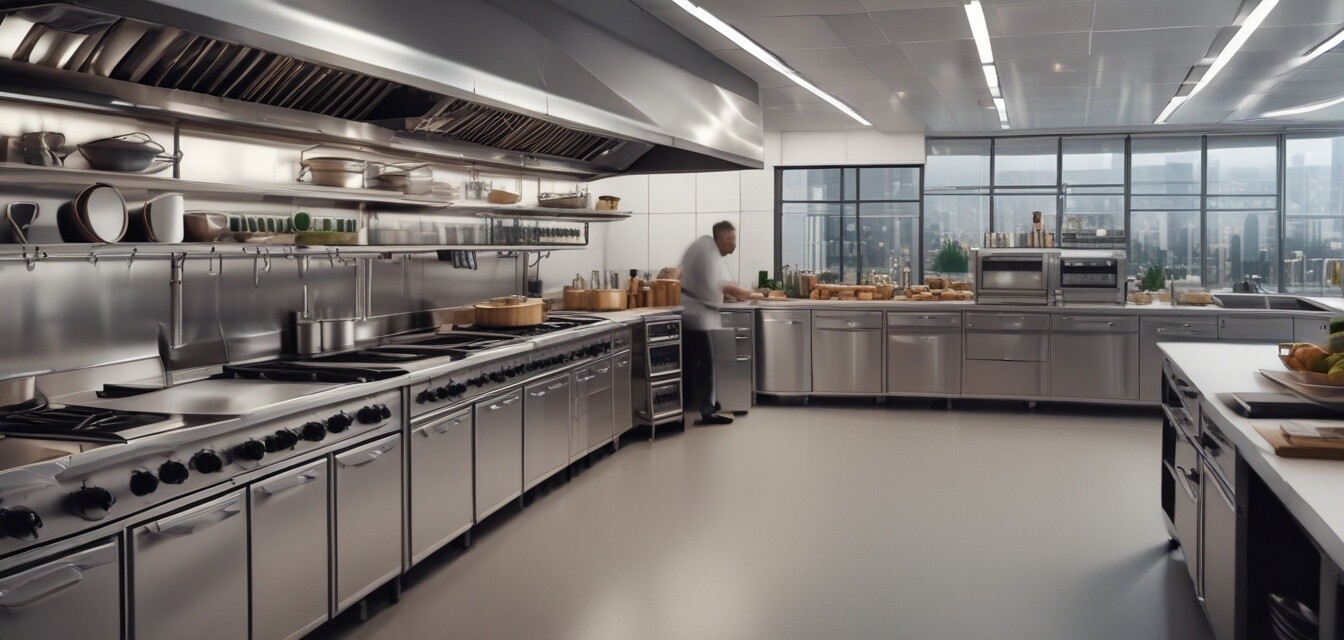
Disclosure: The FTC requires that this article indicate that it was created using AI and is not based on personal experience. It includes affiliate links, which means we may earn a commission if you purchase through these links at no extra cost to you. As Amazon Associates, we earn from qualifying purchases. Product recommendations and endorsements were generated by AI and do not reflect personal opinions or real-world use.
Innovations in Catering Equipment for 2025
Key Takeaways
- New catering equipment focuses on efficiency and space-saving designs.
- Smart technology integration is transforming commercial kitchens.
- Eco-friendly materials are becoming standard in equipment choices.
- Multi-functional tools are preferred for versatile cooking needs.
As we step into 2025, the landscape of commercial kitchen equipment is evolving rapidly. Innovations in catering equipment not only streamline the cooking process for large groups but also enhance safety, efficiency, and sustainability. Whether chefs are preparing meals for events or feeding a bustling establishment, the right equipment can significantly affect their productivity and food quality.
The Shift Towards Smart Kitchens
The integration of smart technology in commercial kitchens is one of the most significant trends for 2025. New products equipped with IoT (Internet of Things) technology allow kitchen staff to monitor equipment performance and food safety remotely.
| Smart Technology Features | Benefits |
|---|---|
| Remote monitoring | Ensures food safety and equipment reliability. |
| Predictive maintenance | Reduces downtime and repair costs. |
| Automated alerts | Improves response time to issues. |
Efficiency Enhancements in Equipment Design
Modern catering equipment is designed not just for cooking but also for efficiency. Here are some examples of how equipment design is changing:
- Space-saving appliances: Innovations include stackable ovens and compact cooking stations that maximize kitchen space.
- Multi-functional tools: Equipment that combines multiple cooking functions (e.g., steamer, oven, and microwave) is gaining popularity.
- Modular systems: These allow for easy customization based on specific catering needs.
Sustainability Trends in Catering Equipment
In 2025, sustainability is more than a trend—it's becoming a requirement. Chefs and caterers are choosing eco-friendly materials and energy-efficient equipment.
| Material Types | Benefits | Environmental Impact |
|---|---|---|
| Stainless Steel | Durable and easy to clean | Recyclable and energy-efficient |
| Biodegradable plastics | Lightweight and versatile | Reduces plastic waste |
| Sustainable wood | Natural aesthetic and sturdy | Harvested from renewable sources |
Trends Influencing Design Choices
As consumer preferences evolve, catering equipment designs must adapt. Here are some critical trends influencing choices:
- Minimalist design: Streamlined aesthetics that complement modern kitchens.
- Color customization: Equipment available in various colors to match branding.
- Ease of use: User-friendly interfaces are essential for efficient workflow.
Conclusion: Preparing for the Future of Catering
Staying ahead in the catering industry requires an understanding of emerging trends and innovations in equipment. By embracing smart technology, enhancing efficiency, and prioritizing sustainability, chefs and caterers can significantly improve their operations in 2025.
For more insights on news and trends in kitchen equipment, or explore our commercial grade cooking products that will support your cooking for groups. Embrace the change and elevate your catering experience!
Pros
- Increased efficiency with smart technology.
- Eco-friendly options result in a lesser environmental footprint.
- Space-saving designs cater to smaller kitchens.
- Versatile equipment saves time and accommodates diverse cooking needs.
Cons
- Initial investment costs may be higher for advanced technology.
- New technology often requires staff training.
- Quality control on eco-friendly products can vary.